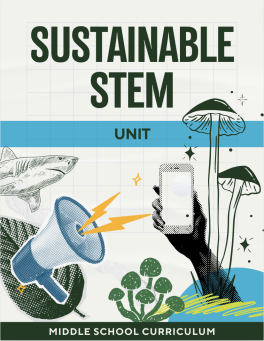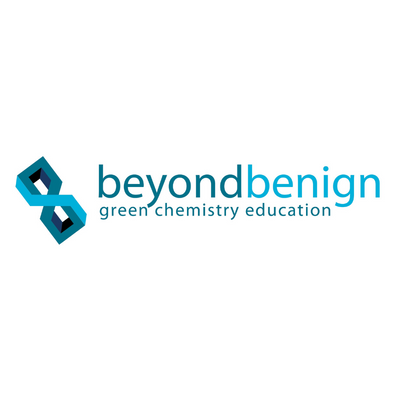Sustainable STEM Overview

Summary
The Sustainable STEM curriculum features a 6-lesson unit focusing on sustainable design. Students create their own cell phone case out of renewable mushroom material and see how the product aligns with the three criteria of green chemistry.
The mushroom material was developed by Ecovative as a Styrofoam replacement for packaging.
Sustainable STEM also features 3 stand-alone lessons.
- Fabulous Fabrics explores the differences between natural and synthetic fabrics.
-Polymer Properties allows students to discover how the properties of polymers change depending on how they link together.
-Sharklet, showcases a technology that was developed after discovering the antibacterial properties of shark skin.
All of these lessons provide students with a look at how industry is incorporating sustainable design into their products. This curriculum will increase students’ awareness of sustainability and green chemistry through hands-on design challenges.
This project came about from a collaboration between Beyond Benign and Steelcase.
The mushroom material was developed by Ecovative as a Styrofoam replacement for packaging.
Sustainable STEM also features 3 stand-alone lessons.
- Fabulous Fabrics explores the differences between natural and synthetic fabrics.
-Polymer Properties allows students to discover how the properties of polymers change depending on how they link together.
-Sharklet, showcases a technology that was developed after discovering the antibacterial properties of shark skin.
All of these lessons provide students with a look at how industry is incorporating sustainable design into their products. This curriculum will increase students’ awareness of sustainability and green chemistry through hands-on design challenges.
This project came about from a collaboration between Beyond Benign and Steelcase.
Safety Precautions, Hazards, and Risk Assessment
Aprons and goggles must be worn at all times in the lab. Always clean up your work area before and after activity.
Wash Hands before and after every lab activities.
Wash Hands before and after every lab activities.
Teacher Recommendations or Piloting Data (if available)
Time required:
Lesson 1: One or two 45-60 min class periods
Lesson 2: One or two 45-60 min class periods
Lesson 3: One 45-60 min class period
Lesson 4: 10–15 days total* (Day 1: 45 minutes, Days 2-14: 5 minutes, Final day: 45 minutes. *Depending on speed of mycelium growth, which relies on classroom conditions.)
Lesson 5: One 45-60 min class period
Lesson 6: One 45-60 min class period
Fabulous Fabrics: Two 45 min class periods
Polymers Properties: One 45-60 min class period
Surefire Sharklet: One 45-60 min class period
Lesson 1: One or two 45-60 min class periods
Lesson 2: One or two 45-60 min class periods
Lesson 3: One 45-60 min class period
Lesson 4: 10–15 days total* (Day 1: 45 minutes, Days 2-14: 5 minutes, Final day: 45 minutes. *Depending on speed of mycelium growth, which relies on classroom conditions.)
Lesson 5: One 45-60 min class period
Lesson 6: One 45-60 min class period
Fabulous Fabrics: Two 45 min class periods
Polymers Properties: One 45-60 min class period
Surefire Sharklet: One 45-60 min class period
Digital Object Identifier (DOI)
https://doi.org/10.59877/EJSP9992
Related Learning Objects
File (PDF, PPT, image, etc)
File (PDF, PPT, image, etc)
Creative Commons License

This work is licensed under a Creative Commons Attribution-NonCommercial-ShareAlike 4.0 International License.

